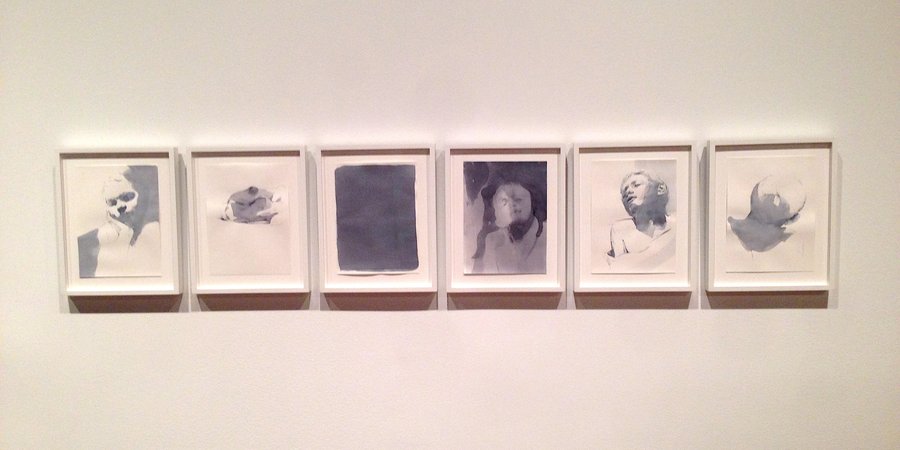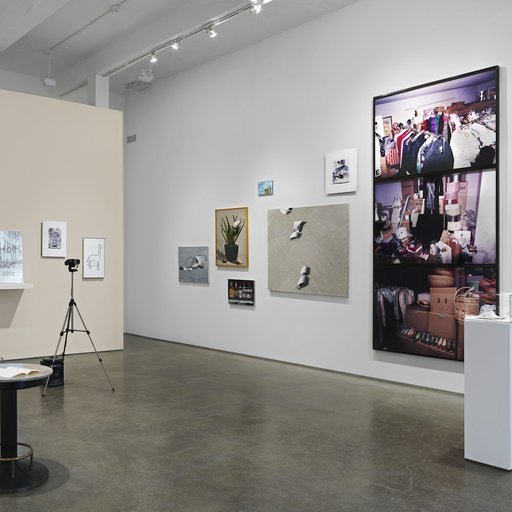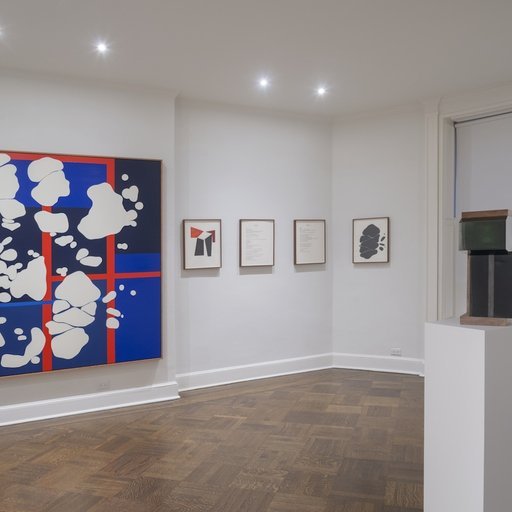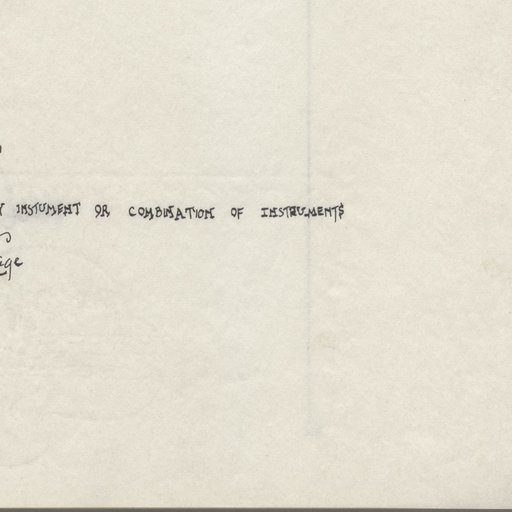"The Biennial of Biennials" is what Whitney chief curator Donna De Salvo called the latest iteration of the museum's dynamic and modish survey exhibition. In case you haven't heard, this year the privilege of organizing the Biennial has been distributed among three different curators, a way of diversifying the artistic spheres and thought processes represented, with each curator responsible for a single floor of the museum. Aside from the individual perspectives of the show's organizers—ICA Philadelphia associate curator Anthony Elms's interstitial spaces and personal archives, MoMA chief of media and performance Stuart Comer's focus on hybridity and identity, and Chicago-based painter and professor Michelle Grabner's emphasis on craft and female painters—at the end of the day, regardless of its guiding thematics, the Biennial represents a collection of the most promising, accomplished, and exciting artists working today.
In terms of content, much of the work this year seems to be revisiting the crisis of the "post-medium condition" (e.g. the liberation of a painting from having to just be a painting), as famously described by critic Rosalind Krauss, albeit from a retrospective—perhaps even nostalgic—point of view, imagining possible futures for art-making in the wake of both rapid progressions in technology and the dematerialization of the art object. What follows is an attempt to hash out a few of the major strategies and themes that stand out within the Biennial.
SHOWING ONE'S WORK
The Biennial's co-curators have noted that they wanted this iteration of the show to focus on the traditional mediums of painting, sculpture, and craft. Formal analysis, then, is fair game, and strikingly noticeable among the two-dimensional works on view on all three curators' floors is the dominant presence of grisaille paintings and drawings. Look for the series of muted, monochromatic watercolors by Paul P., moody photographic botanical studies by Milijohn Ruperto and Ulrik Heltoft,Charline Von Heyl's wall of contrast-rich collaged abstractions, and Karl Haendel's painstaking pencil drawingsall executed in grayscale.Other works, like the purple-tinged hectographic prints included in Valerie Snobeck and Catherine Sullivan'scollaborative installation, are monochromatic, if not full-on black-and-white.
More than an easy way to achieve the identifiable "look" of contemporary work, these monochromatic stylings highlight the draftsmanship and technical skill of the artists who made them. The particular ability of grayscale to deepen a composition, old hat in the realm of photography, seems finally to be crossing over into other two-dimensional art forms.(Note that when more traditional examples of colorful figurative painting, like Keith Meyerson's, are displayed, they are most likely to be hung floor-to-ceiling, salon-style.)
The Biennial also includes ceramic works by Sterling Ruby,John Mason,Shio Kusaka, and Pam Lins (in collaboration with Amy Sillman), and while the examples here are colorful and lustrously glazed, they serve the same conceptual purpose as the works mentioned above within the larger conversation the of Biennale—that is, they highlight the action of the artist's hand as works requiring dexterous skill in a world where such displays of manual proficiency are fewer and farther between than ever before. Elijah Burgher's skillful drawings of male nudes achieve the same effect through their muted renderings in colored pencil.
WORDS WITHOUT PICTURES
One of the most talked-about artists in the Biennial's roster is celebrated late author David Foster Wallace, who is represented here by notebooks he kept while working on his last novel, The Pale King. But if Wallace's inclusion here is odd, it's only because he fits in so well. Thanks to developments in conceptual art in the 1970s, wherein artists, in the lineage of Joseph Kosuth, attempted to distill the artwork into the presentation of words and ideas rather than crafted objects—not to mention the recent vogue for archival ephemera as exhibition material—artists, curators, and museumgoers are well-acclimated to seeing pieces of text on display in museum galleries.
This Biennial shows its curators comfortable, adept, and keen when it comes to including entries from the literary world within the exhibition format. Aside from Wallace, also represented here is poet Susan Howe, whose lines of appropriated prose are elegantly displayed inside a sleek vitrine in two-page pairings, as if displayed in an open book. Ben Kinmont's work is an invitation to an exchange of letters: visitors are asked to send the artist a record of a conversation they've had at home (leaving out the conversation's content), which Kinmont will use to create "letterpress conversation sheets" that will go on display in the Biennial.
Other comminglings with the literary world come in the form of a display of pamphlets by respected independent publisher Semiotext(e) and a room dedicated to online publishing platform Triple Canopy. The latter, interestingly, takes a bold and distinctly artistic approach, crafting an installation that uses objects from the Colonel Edgar William and Bernice Chrysler Garbisch collection of early American furniture and painting. Examples are reproduced in a variety of methods, including a 3D-printed copy of a colonial-era washbin.
ROOMS WITHIN ROOMS
Curators will want to pay special attention here: all three floors of the Biennial include some variation on the show-within-a-show, a strategy that was introduced at the 2012 Biennial and is refined here. Beyond collaborations, these arrangements house islands of independent inspiration, related to the themes of the exhibition at large but filtered through the interest, research, or collections of individual demi-curators.
On the second floor, Anthony Elms incorporates room-sized installations of ephemera from the archives of art critic Gregory Battcock in an installation organized by artist Joseph Grigely, as well as a miniature show of the collected live music recordings and related ephemera of Malachi Ritscher organized by the group Public Collectors. Up one flight, Stuart Comer's floor includes a miniature exhibition of works selected from the Whitney's collection by Julie Ault, which is smartly demarcated by mirrored paneling on the insides of the doorframe that are copied after those in one of Liberace's homes, and includes pieces by Martin Wong, Danh Vo, and James Benning. Nearby, a piece by filmmaker-turned-artist Morgan Fisher literally nests scale drywall models of the three rooms of the new Whitney building inside each other. Meanwhile, on the fourth floor, Michelle Grabner has included what's referred to as a "minishow" wherein painter Gaylen Gerber has painted a wall gray and hung wry, minimal paintings by Trevor Shimizu on top.
UNDERREPRESENTED ARTISTS
The term "octogenarian" was last thrown around in art journalism when Richard Artschwager had his major retrospective at the Whitney in 2012; this year's Biennial is the perfect occasion to trot it out again. The Biennial is known for being a career-making event for young, emerging artists, so it's refreshing to see a definitive interest in underrepresented artists of older ages here as well. One of the numerous sub-installations on Stuart Comer's floor displays a series of paintings by Tony Greene, the late painter who showed promise in New York in the 1980s and '90s but hasn't been institutionally revisited since then, jointly curated by the artists Richard Hawkins and Catherine Opie. Also given prominent spaces are Channa Horowitz, who died last year, with large-scale, intricately constructed ink drawings on mylar that are reminiscent of Hanne Darboven's numeric abstractions, and leporellos—painted accordion-folding books—by Etel Adnan, the Lebanese-American writer and artist who participated in dOCUMENTA 13 and has an exhibition at the Arab Museum of Modern Art (aka Mathaf) in Doha coming up later in March.
THEATRICAL EFFECT
If the works included in the main installation are any indication, one should expect to see a heightened sense of drama, in the traditional sense, on display in the expansive program of performances to be held throughout the Biennial's eleven-week run (for a full schedule, see the Whitney's website). The recent large-scale retrospective of Mike Kelley's work at MoMA PS1 may have something to do with this: Kelley's stage-set-hybrid sculptures and hysterically melodramatic videos have had a widespread influence on an entire generation of artists.
Like the Kabuki jazz-dancers who led visitors from one installation to another in Kelley's retrospective as it was installed in Amsterdam's Stedelijk Museum, Charlemagne Palestine's installations in the museum's stairwell connect each of the curators' floors, to humorously unsettling effect: they consist of sadstuffed animals sitting atop speakers that play droning organ music. Elsewhere in the exhibition, Ei Arakawa's takes up the role of stagehand to assist visitors, who are invited to wear his sculptural three-person hats festooned with flowers and fruits.
A highlight of the press preview was Los Angeles-based performance collective My Barbarian's reading of an excerpt from their adaptation of Bertolt Brecht's "The Mother"—yes, "corny" may be the only word to describe it, but this is by design, and the piece is engaged in a serious meta-critique of what it means to be performing in today's capitalist framework. The real meat of the performance came when the play was interrupted for a "press conference," in which the performers answered questions (actually written into the script) that were, supposedly, from the audience. The most poignant question posed: "Isn't leftist theater really 'in' right now?" The answer from My Barbarian's Alexandro Segade: a curt "No." And we should all know by now that the vocal denial of a trend by its practitioners is the surest sign of its ascendancy.
READ THE REST OF OUR WHITNEY BIENNIAL COVERAGE
Curator Michelle Grabner On Her Unruly "Curriculum"
Curator Stuart Comer On His Shapeshifting Presentation
Curator Anthony Elms On The Rise Of Literary Art And The Usefulness Of Ghosts
Artist Amy Sillman on Painting, Stand-Up Comedy, and Making Inappropriate Art
A Brief History of the Whitney Biennial, America's Most Controversial Art Show



























